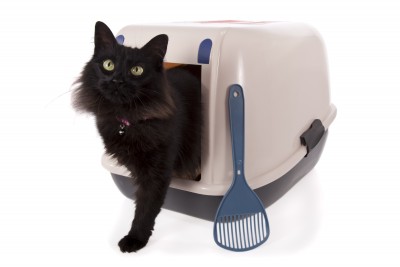While most cats are very clean and will easily use the litter box, they may eliminate in undesirable locations for a number of different reasons. There are two types of elimination problems seen in cats, marking and housesoiling.
A visit to your veterinarian can help rule out a medical cause and lead to an early diagnosis to a disease. Many diseases can cause several elimination problems. Kidney or diabetes can increase frequency, bladder disease or arthritis can cause painful urination, diarrhea will increase the frequency of bowel movement and constipation or anal glands can cause discomfort. Hormonal conditions and disease that affect the nervous system can also lead to housesoiling in young and older pets.
Marking
Marking is when urine is sprayed, in a standing posture with their tail raised, on vertical objects such as furniture, plants, or walls.
There are many causes as to why cats may begin to mark new areas:
- New pets, objects, odors in home.
- Unhealthy relationship between person and cat.
- People moving into/out of home, moving to a new home.
- Other cats coming onto the property.
- Changes in the environment; increase in anxiety or conflict.
Find the cause, and we work to find a solution
- Spay/neuter your cats early.
- Improve bond between owner and cat.
- Remove anything that may attract stray cat to property.
- Keep your cat away from door and windows.
- Synthetic feline pheromones.
Housesoiling
Housesoiling is when voiding of stool and/or urine, in a squatting posture, occurs in places other than the litter box on a horizontal surface.
Possible causes for housesoiling:
- Medical problems.
- Unclean or not enough litter boxes available.
- Being confronted in the litter box by dog, cat, or human.
- Undesirable litter or litter box, and location of litter box.
- Preferred feel or comfort of a surface or location other than the litter box
How to prevent housesoiling:
- Confine in a room with a litter box when left alone.
- Prevent access to the soiling area; place food, toys, bed in the area.
- Interrupt your cat when soiling; spray bottle or noise, no physical punishment.
- Try different litter, litter box, location of litter box.
If these steps do not solve the problem, consult your veterinarian for further guidance.



